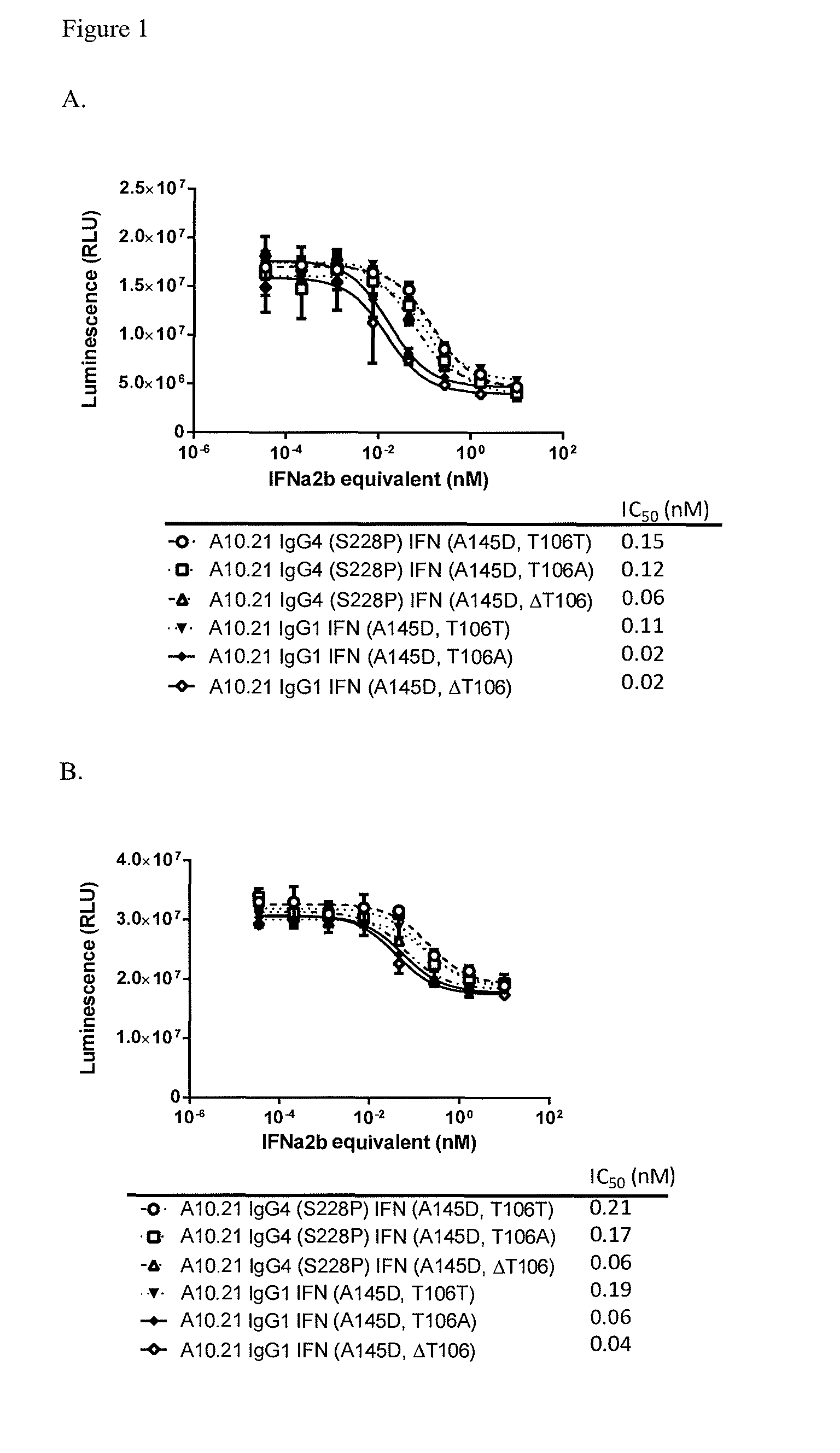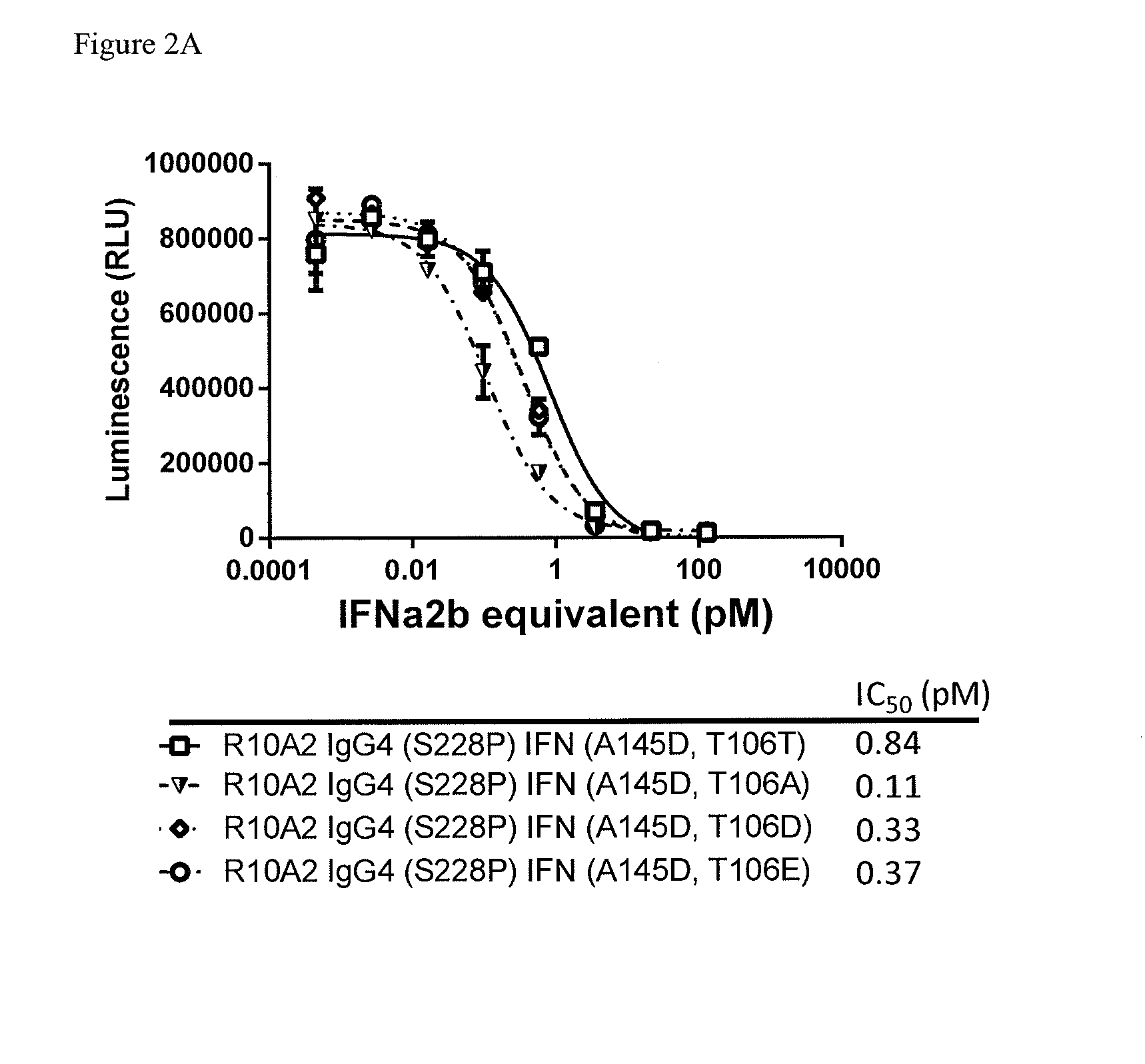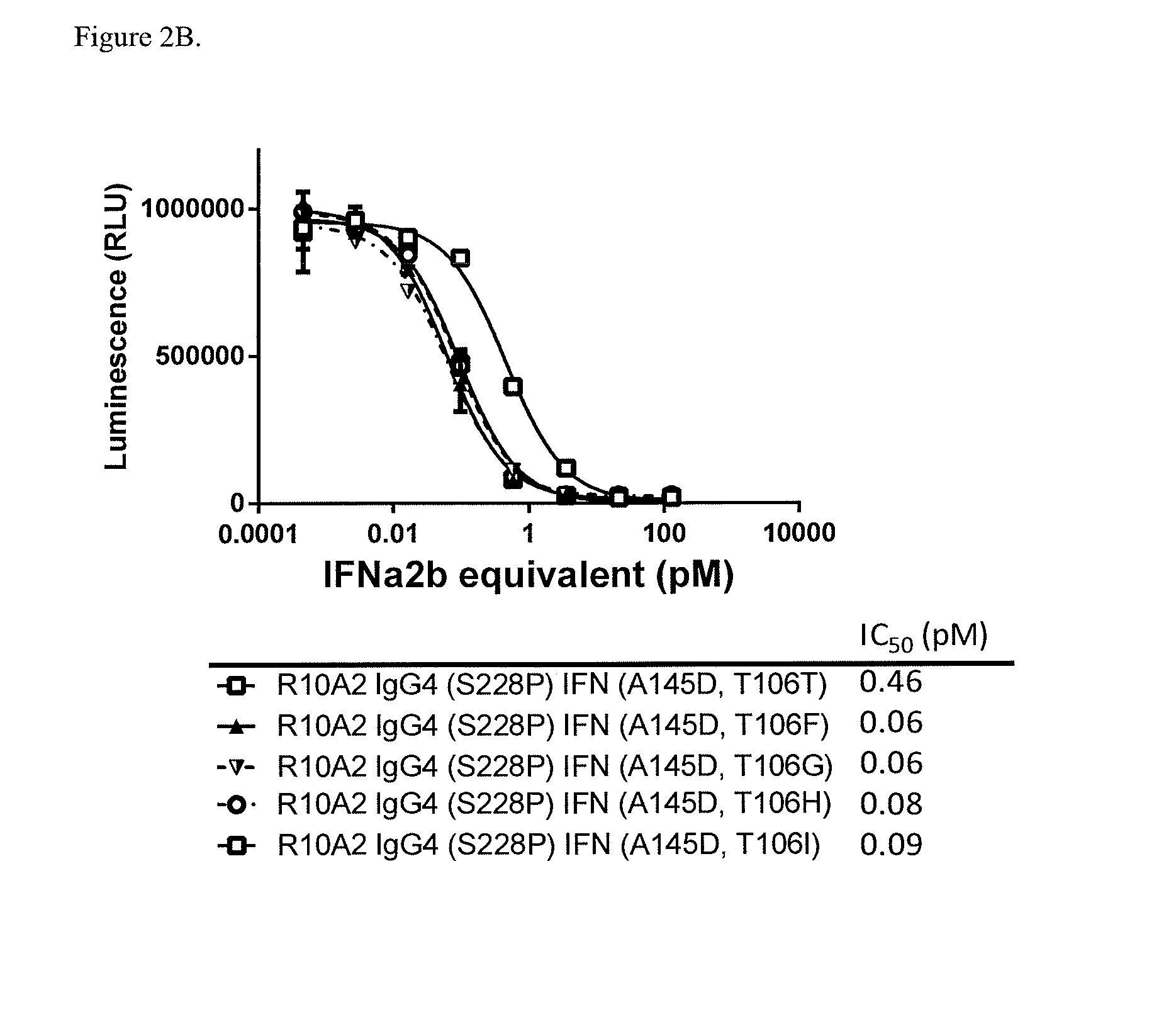Interferon alpha 2b variants
a technology of interferon and alpha 2b, applied in the field of polypeptides, can solve the problems of toxicity when administered to human patients, many peptides are not suitable as drug candidates, and poor tolerance, and achieve the effects of reducing heterogeneity, enhancing fcrn binding, and improving target selectivity
- Summary
- Abstract
- Description
- Claims
- Application Information
AI Technical Summary
Benefits of technology
Problems solved by technology
Method used
Image
Examples
example 1
Isoelectric Points of Anti-Cd38 Antibody Attenuated IFNα2b Fusion Proteins
[0193]Various transiently transfected cells expressing an anti-CD38 antibody-attenuated IFNα2b fusion constructs (Table 2) were harvested and purified using a Mab Select Sure Protein A column. Samples were desalted into 200 mM Arginine, 25 mM Histidine pH 6.5 using a HiLoad Superdex 200 column
TABLE 2Table of ConstructsSEQ ID No.HeavyLightAntibody ConstructsChainChainIFNVH + IFNA10.21 IgG4 (S228P) IFN4881107(A145D, T106T)A10.21 IgG4 (S228P) IFN48812587, 31(A145D, T106A)A10.21 IgG4 (S228P) IFN488111061(A145D, ΔT106)A10.21 IgG1 IFN (A145D, T106T)5081107A10.21 IgG1 IFN (A145D, T106A)50812568A10.21 IgG1 IFN (A145D, ΔT106)508183A10.43 IgG4 (S228P) IFN5581107(A145D, T106T)A10.43 IgG4 (S228P) IFN55812574(A145D, T106A)A10.21 IgG4 (S228P) IFN48812531(A145D, T106S)A10.21 IgG4 (S228P) IFN48812531(A145D, T106V)A10.21 IgG4 (S228P) IFN48812531(A145D, T106G)A10.21 IgG4 (S228P) IFN48812531(A145D, T106E)A10.21 IgG4 (S228P, M252...
example 2
Anti-Proliferative Activity of Antibody Attenuated Interferonα2b Fusion Proteins
[0202]The anti-proliferative effects of IFNα2b consist of direct and indirect activities. Direct activity occurs through cancer cell growth inhibition by cell cycle arrest (Matsui et al. 2003), apoptosis by death receptor-dependent (Crowder et al. 2005) and -independent (Otsuki et al. 1998) pathways, or differentiation (Matsui et al. 2003). Target-specific direct cytotoxicity of antibody attenuated interferon fusion proteins were measured against target positive cell lines using a luminescent cell viability assay.
Anti CD38-IFN Lead Sequence Samples
[0203]The constructs (Table 3) were either stably cloned or transiently transfected and were harvested and purified using a Mab Select Sure Protein A column. Samples were desalted into 200 mM Arginine, 25 mM Histidine pH 6.5 using a HiLoad Superdex 200 column
TABLE 3Table of ConstructsSeq Id No.HeavyLightVH +Antibody ConstructsChainChainIFNIFNA10.21 IgG4 (S228P)...
example 3
On / Off Target Activity of Antibody-Attenuated IFNα2b Fusion Proteins
[0220]The iLite™ reporter gene assay was performed for the quantitative determination of Human Interferon Alpha (IFNα2b) bioactivity (IU / ml) using luciferase generated-bioluminescence. The cells used in this assay express CD38 and were used to measure the ‘ON-target’ activity of anti-CD38-attenuated IFNα2b fusion proteins. These cells can also be used to measure ‘OFF-target’ activity when CD38 is blocked with an anti-CD38 antibody recognizing the same epitope. These assays can be used to determine the Selectivity Index (SI) which is a measure of how selectively active anti-CD38 IFN fusion proteins are against CD38+ target cells and non-active on cells where CD38 is blocked (mimicking CD38− cells). The larger the SI the more selective the agents are against the target, while a number close to 1 indicates that there is no selectivity against the target or non-target. Intron A was used as a positive control as it is ac...
PUM
| Property | Measurement | Unit |
|---|---|---|
| pH | aaaaa | aaaaa |
| temperature | aaaaa | aaaaa |
| pH | aaaaa | aaaaa |
Abstract
Description
Claims
Application Information
 Login to View More
Login to View More - R&D
- Intellectual Property
- Life Sciences
- Materials
- Tech Scout
- Unparalleled Data Quality
- Higher Quality Content
- 60% Fewer Hallucinations
Browse by: Latest US Patents, China's latest patents, Technical Efficacy Thesaurus, Application Domain, Technology Topic, Popular Technical Reports.
© 2025 PatSnap. All rights reserved.Legal|Privacy policy|Modern Slavery Act Transparency Statement|Sitemap|About US| Contact US: help@patsnap.com



